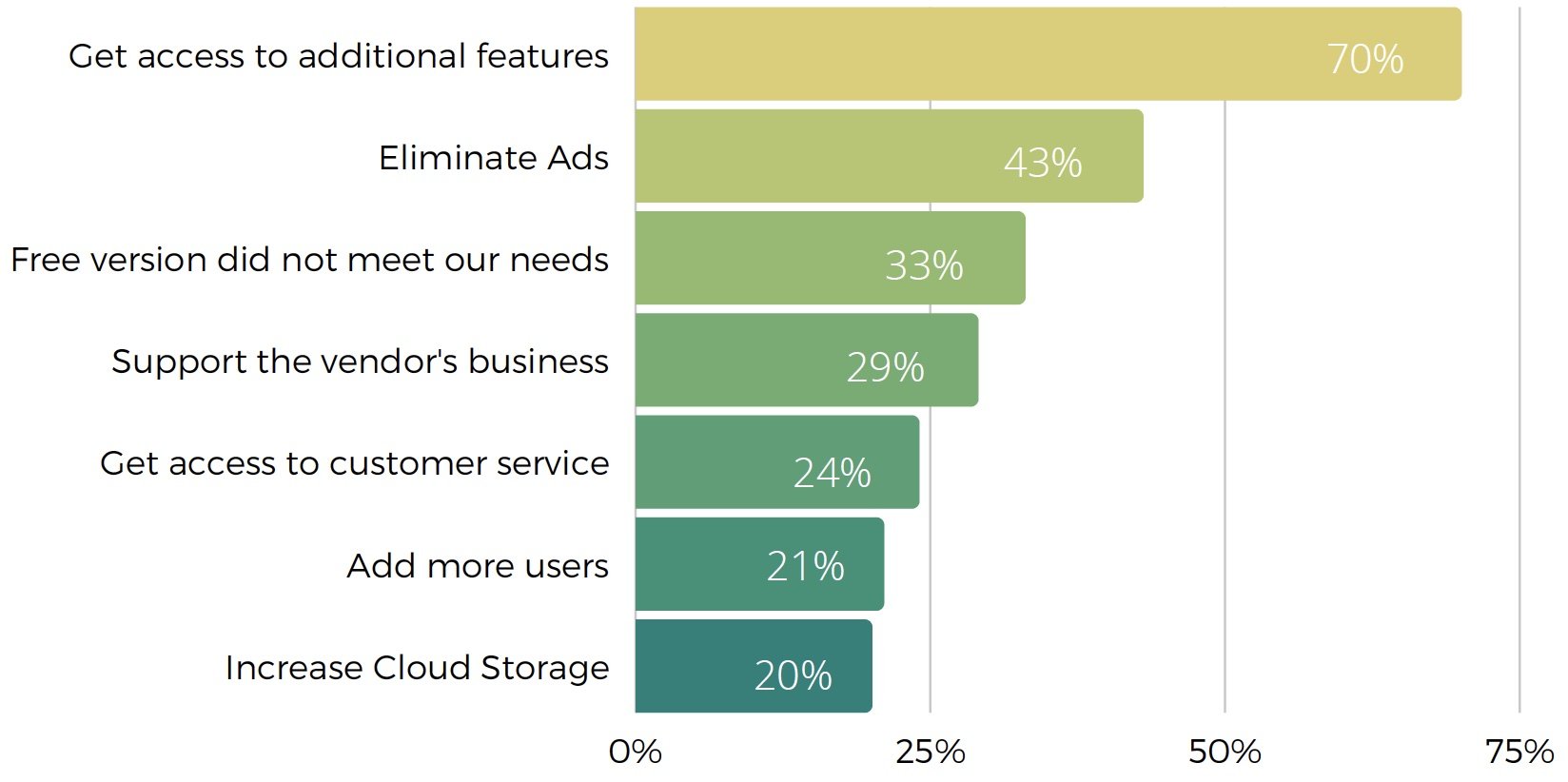From Free to Paid, Why Do SaaS Customers Upgrade?
We recently published a report on subscriber experience based on a survey conducted in May of 2022 (N=394). The survey collected data on a number of subscription topics, including trying to understand why customers upgrade from a free version. Free versions and free trials are important tools in building a product led growth (PLG) business and conversion to paid is always a hot topic in a PLG company. There are many factors that can influence the customer’s decision to convert, but there is a core set of levers that can be manipulated.
The PLG Strategy
What is PLG?
“Product-Led Growth is a go-to-market strategy that relies on using your product as the main vehicle to acquire, activate, and retain customers.” Product Led Growth: How to Build a Product that Sells Itself - Wes Bush -2019
At a high level the key to building a successful PLG offering lies in effectively mapping to how buyers choose to buy. If buyers are researching and buying in a different way then it’s important for long term business health to adapt to the new behavior. Meet the user where they are and provide an experience designed to map to how they choose to purchase. That is the most compelling reason to shift to PLG, but companies also see higher financial productivity, lower customer acquisition costs (CAC), shorter sales cycles, and improved customer satisfaction (CSat) as a result of an effective PLG strategy.
Generally PLG relies on reducing friction for the customer at every interaction. There are three basic concepts that you need to consider when building the strategy:
Invest in the product - collect and use feedback data to improve the product. If you want to know more about using feedback read this post. From a product perspective fail fast and refine your packaging and offering using experiments to test your ideas.
End user focus - Feedback directly from users, listen to user and refine the experience as well as the product. Personalize using behavioral feedback data. Build a product culture of rapid, continuous improvement.
Give value BEFORE getting value - This is self explanatory, user success comes before sales, and there must be fast time to value to capture the customer’s interest.
But this isn’t a post on PLG, I’m working on a more detailed report coming soon.
Free
There are two ways to use free in a SaaS business model (and in “anything” as a service / subscription model), free trial and free version. Free trials are time bound and free versions theoretically aren’t, although there is always some potential for future business model changes that impact the use of the free version. In the survey 71% of the respondents had subscribed to a free version. Free versions and free trials influence the purchase decisions and have some impact on satisfaction. Free trials have a bigger impact on purchase decisions, with 34% of survey respondents choosing it as the #1 influencer, the #1 response to the question. Free version was a close second though, at 27%.
From a satisfaction perspective it’s probably not surprising that both free trial and free version rank lower that factors like price, self-serve capabilities and customer service. Once again though, free trial (71%) ranked higher than free version (62%), with free version the lowest ranked factor in the list. Looking at those two factors individually by company size, large enterprise companies (>$1B in revenue) ranked free version the highest, while small businesses ranked it the lowest. Mid-size companies, $101M - $1B in revenue, ranked free trial the highest.
Conversion
The good news from the survey, of the 71% that had used a free version, 83% upgraded to paid. Why do customers convert from a free version to a paid version?
Getting your packaging correctly scoped so that there’s enough value in the free version to get and keep the user engaged, while leading them to upgrade to increase access to features is the most obvious reason. The number 1 and number 3 responses are both related to packaging. Finding that blend of value to features is not easy, and often takes many iterations to get it optimized to raise conversion rates to the highest possible level without making the free version so limited that the customer chooses to churn over upgrade.
The number two reason, “eliminate ads” is more common in a B2C model, but some of those tools can also be used for business. The balance issue stretches to this factor as well. The service has to have enough value, with just the “right” amount of annoyance from the ads to get some percentage of users to move. If the value is low, they’ll churn, and if the ads are to aggressive, the level of annoyance will outweigh the value and they also will churn.
Feature limiting based on measurable dimensions is an acceptable way to structure packaging that users are reasonably comfortable navigating. Limiting storage, number of users, bandwidth, any quantifiable metric based limit is generally understood to relate to vendor costs and is, as long as the pricing is perceived as reasonable, not objectionable. Getting access to higher levels (or types) of service falls in the same category. Changing service levels, response times, or adding additional communication channels fits easily into the model of paying for convenience or to lower risks.
If subscriber experience is of interest I’d encourage you to download the full report.


